Sleep. We all need it. There are fewer things in life that are better than getting some full 8 hours worth of zzz’s.
A good sleep will make us feel refreshed and ready to start the day, instead of being part of The Walking Dead.
But if you find yourself depleting the coffee in the coffee machine faster than a cheetah on wheels, chances are, you’re not clocking enough sleep.
The lack of quality sleep may lead to sleep deprivation and consequently, further health problems like insomnia, memory problems and depression.
But do you also know that your bedroom can influence your sleep? Making a minor tweak to your bedroom may result in better sleep quality. Here are 9 bedroom designs to sleep better.
Table of Contents
1. Go for calmer wall colours

According to a study on how colours affect sleep, your bedroom colour plays an instrumental role in your sleep as well as setting the tone of your lifestyle.
Blue, a colour that’s linked to calmness and tranquillity, averaged the highest amount of sleep at 7 hours and 52 minutes.
The reason?
Receptors in our retinas, known as ganglion cells, are more sensitive towards blue. The study also showed that people who sleep blue bedroom designs tend to wake up feeling positive and have reduced blood pressure.
Calmer colours like green and yellow also scored a high average amount of sleep, averaging around 7 hours and 40 minutes of sleep.
Conversely, averaging at 5 hours and 56 minutes, people sleeping in purple-coloured bedrooms had trouble relaxing because it stimulates creative thinking.
However, bear in mind that though the right bedroom colour is a rough blueprint for getting better sleep, it’s far from being conclusive – it also depends on individual preferences. If you feel more comfortable with “forest green” for instance, perhaps that colour will instil more calmness to you than blue.
2. Add soothing scents to your bedroom designs

While a bedroom colour will help you sleep better, equally important is the smell of the air in your bedroom.
Leaving your dirty laundry in the room, or having your pet’s potty training newspaper nearby may have an adverse impact on sleep.
Incense smelling candles, air fresheners, and aromatherapy essential oils like lavender, sandalwood and bergamot all have soothing smells that help to relieve stress and anxiety while making you refreshed in the morning.
One study even found that the natural sweet smell of jasmine encouraged a better quality of sleep and better cognitive abilities while reducing stress and anxiety.
3. Dim the lights

Our bodies produce a hormone called melatonin, and higher amounts of melatonin are produced at night before bedtime, which helps you to sleep better.
However, exposure to light can reduce the amount of melatonin that is produced by our bodies, and impact our ability to fall asleep.
To avoid this, use thick curtains to block outside lights, street lamps and car headlights as you get ready for bed.
Also, use soft lighting to give your room a tranquil feeling before you switch off the lights, and don’t forget to have the switches close by so that you can switch them off while you’re tucked in comfortably in bed.
Using your phone or gadgets before you sleep is also a bad idea, as the artificial “blue light” emitted from these gadgets will disrupt your sleep cycle by suppressing your melatonin production and resetting your biological clock. Research has shown that a two-hour exposure to blue-light emitting devices decreases melatonin levels by up to 22 percent.
4. Add indoor plants
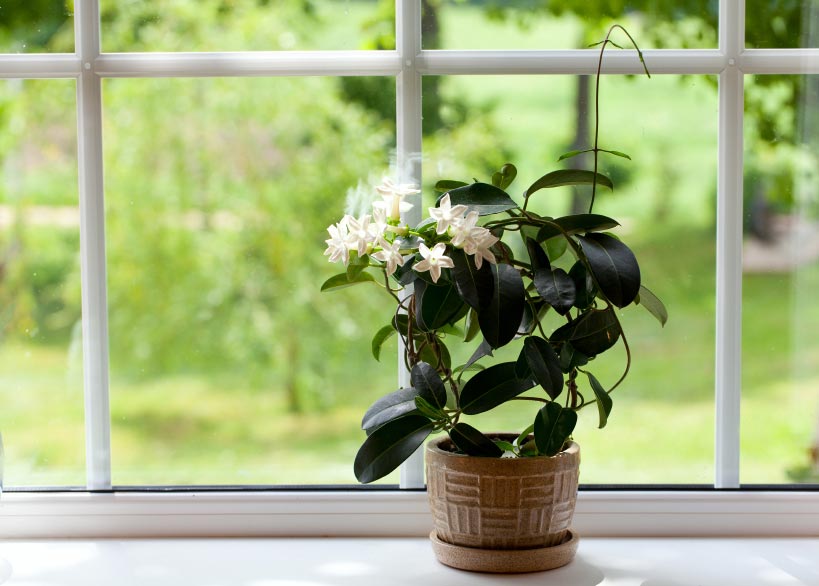
In general, having indoor plants correlates to better mental health as well as lower stress levels. One study of having indoor plants in hospital room concluded that patients had lesser stress levels than those who weren’t exposed to plants.
In addition to improving the aesthetics of your room, adding plants to your bedroom designs will also purify the air in your room. Snake plants and aloe vera are not only considered some of the best air-filtering plants that will improve the air quality, but they also continue to produce oxygen during the night.
5. Mind your temperature
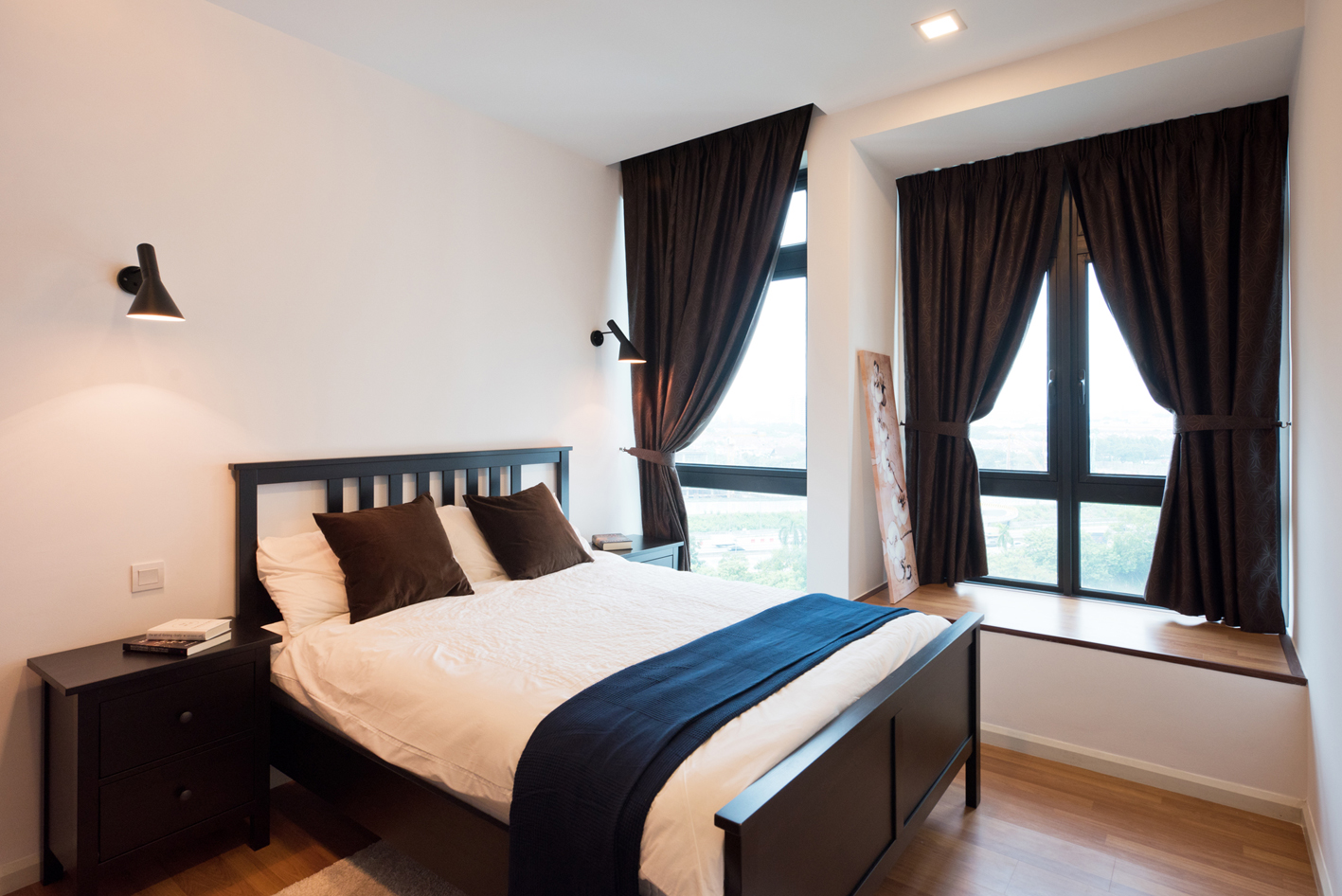
You won’t be able to sleep properly when you’re drenched in sweat or shivering from an icy blast of cold air, so moderating your bedroom temperature is important to help you sleep better.
Thanks to our hot tropical climate, your energy bills will rack up very quickly if you’re constantly turning on the AC. But fret not, because you can make some major differences through some relatively simple steps:
- Switch to LED or CFL lights instead as they give out a lot less heat as you are getting ready for bed
- Opt for cotton bedsheets as they “breathe” easier
- Unplug electrical devices that are not in use as anything that remains plugged in may still generate heat
- Have good natural ventilation in your room and around your house
- Have an air cooler in your room. Air coolers are not only more affordable than air conditioners, they also consume less power and don’t dry the air
It’s also crucial to regulating your own core temperature. Make sure that you’re well hydrated, and don’t forget to have a thin sheet nearby to protect from draughts.
6. Keep the noise down
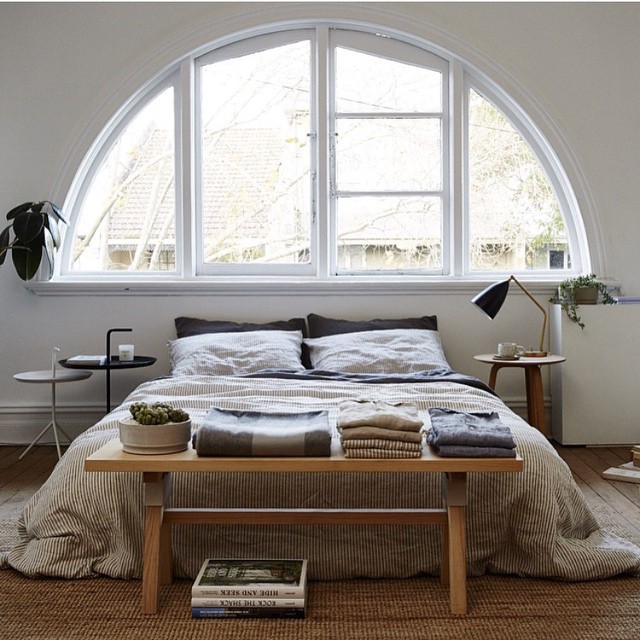
It’s impossible to sleep when it’s noisy, so turning off your electrical devices can spare you from beeping sounds and electronic ringtones in the middle of the night.
But electronic noises aren’t your only concern, as it’s also equally important to have a quiet ambience in your room. Have carpets, cushions and rugs in your room as they are excellent sound absorbers.
And though they cost slightly more, window seals and solid-wood-core doors work great at blocking sound from entering your room, resulting in lesser noise distractions.
Also, make sure that everything is switched off or is on silent (except for your alarm clock of course), as you won’t want a midnight call interfering your sleep.
Turning on your ceiling fan will help to produce white noise — a combination of noises of different frequencies — to “block” background noises.
7. Keep your room neat and tidy

Another reason why you might feel so restless at night could be that your room is full of clutter, and you won’t have a good night’s sleep if your mind is constantly being bothered by the state of your untidy and unkempt room.
Be sure to keep your room well organised; make sure paper, files and clothes are not scattered around and are where they belong (properly arranged in folders and baskets) so that you won’t feel inclined to clean and tidy up your room.
Run of places to store your belongings? Add more built-in storage cabinets for extra storage space. You can also keep your things organised and safely stored without worrying about missing items.
8. Choose the right mattress

Choosing the right bed can make a big difference between good and bad quality sleep.
Everyone has different preferences for a mattress, so it’s important to choose a bed that’s comfortable for you. Here are the types of bed that you should know:
- Innerspring: Innerspring mattresses make up the majority of mattresses and come with steel coils for support. The thickness and number of springs are key to having a softer or harder bed; mattresses with lesser and thicker springs usually mean that your mattress will be firmer, while thinner springs will mean that you’ll have more springs supporting you, making your bed softer.
- Memory foam: First designed by NASA, memory foam mattresses mould to the shape of the user according to their body heat and pressure, while providing equal body weight support at the same time. Once there is no pressure, the bed returns to its original shape, hence the name “memory foam”. A memory foam mattress may provide better sleep for people with back pain.
- Latex: Like a memory foam, a latex mattress will respond according to each individual’s body changes, only at a faster rate because it only reacts to pressure. While latex is more expensive, they’re more suitable for those who do not like the sinking feeling of a memory foam mattress. On top of that, they’re more eco-friendly and are dust-mite resistant.
- Airbed: Airbeds are lightweight mattresses that are designed to look like an innerspring mattress, but instead of having coils for support, they have air chambers as their support systems.
- Waterbed: Similar to an airbed, a waterbed is designed to look like conventional beds, but they “softness” can be adjusted. As the name suggests, a water bed has a water support system inside a fabric casing. They’re also easy to clean, are mite free, and pose no threat to people with allergies or asthma.
9. Eliminate distractions
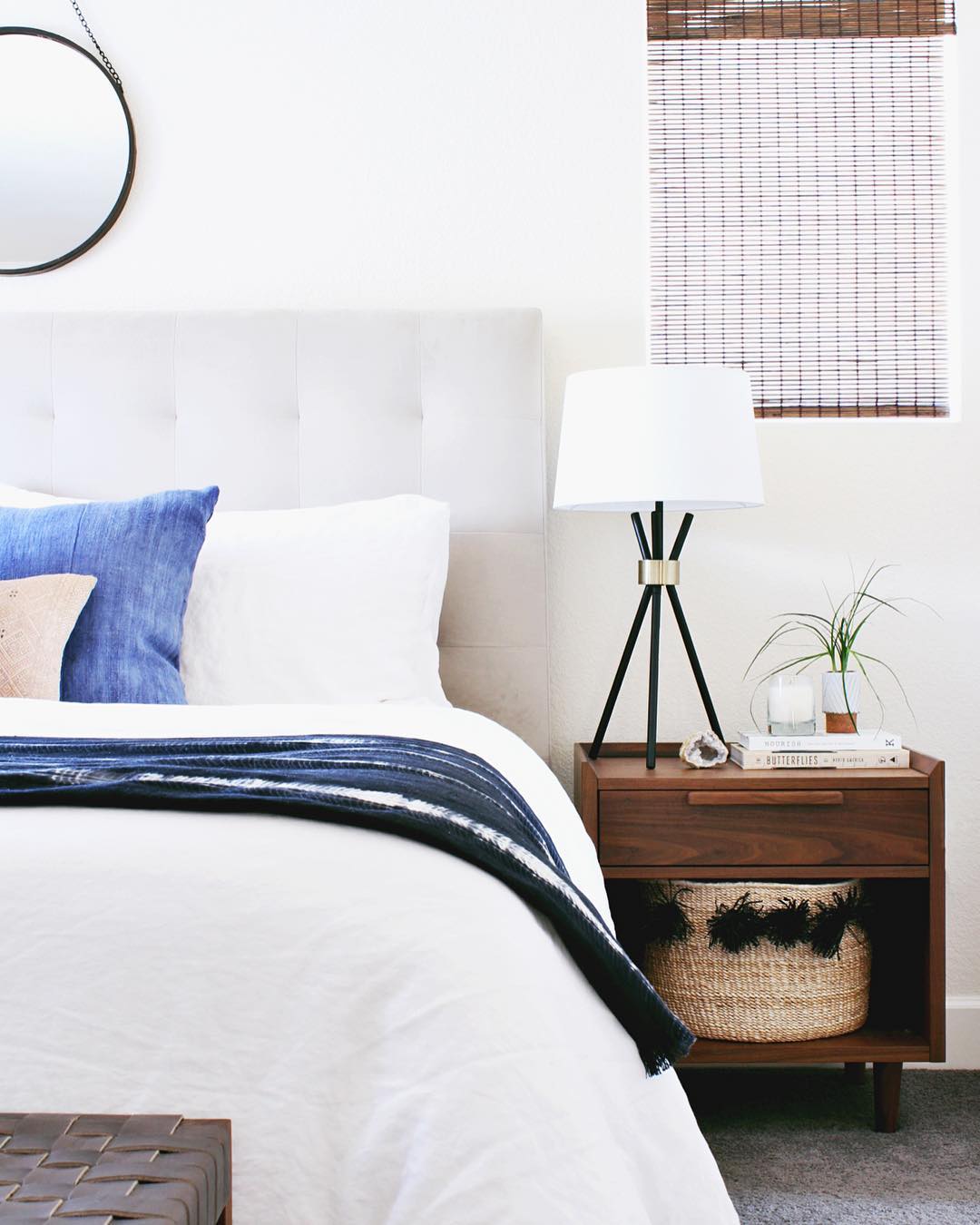
Last but not least, your bedroom should be designed to help you sleep as soon as your head hits the pillow.
Remember to keep it simple. Ban televisions, mobile devices, computers, treadmills, game consoles, food, and pets from your bedroom to create a tranquil sanctuary to escape the stresses of the day.





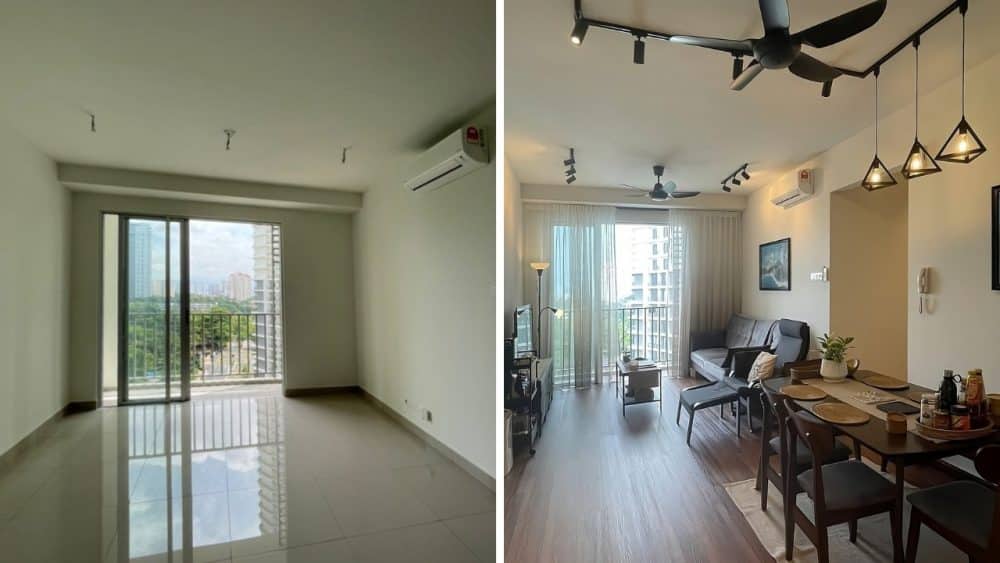
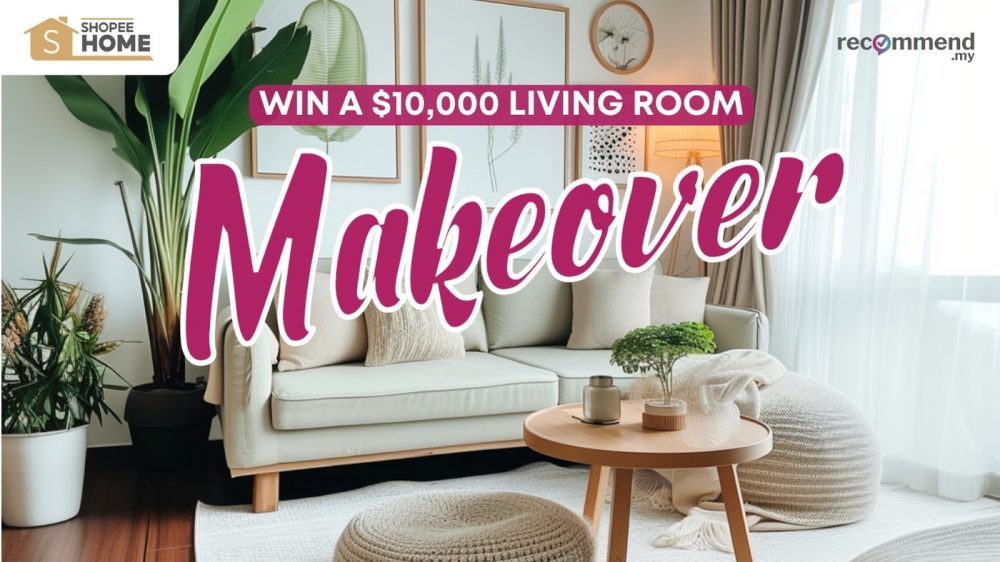



Pingback: 8 Budget Interior Design Ideas - LIVING by Recommend
Pingback: Feng Shui Basics When Renovating Your Home - Recommend LIVING